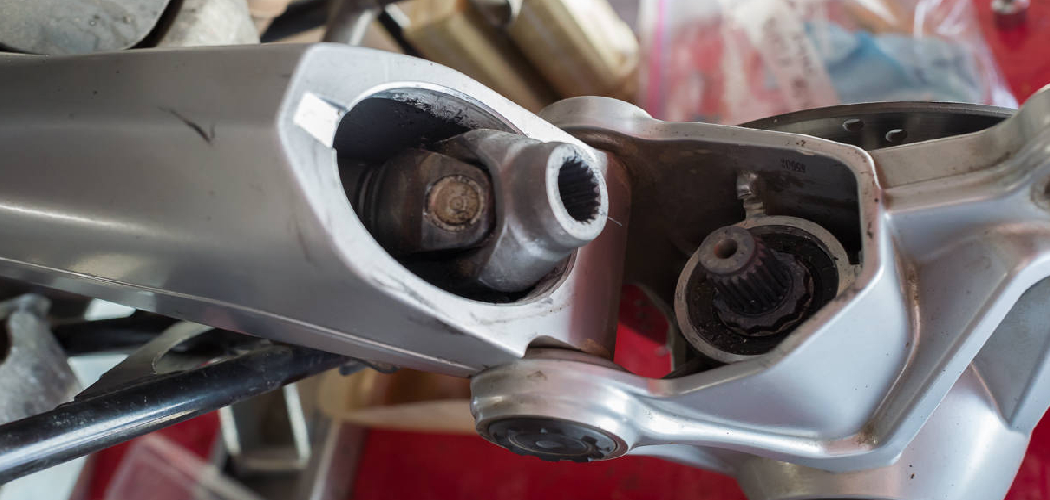A harmonious interaction between a vehicle’s components is crucial for optimal performance, and the drive shaft plays a pivotal role in transmitting power between the transmission and the wheels. One of the challenges that can disrupt this equilibrium is an improper drive shaft angle, often leading to issues such as vibrations, wear, and even drivetrain damage.
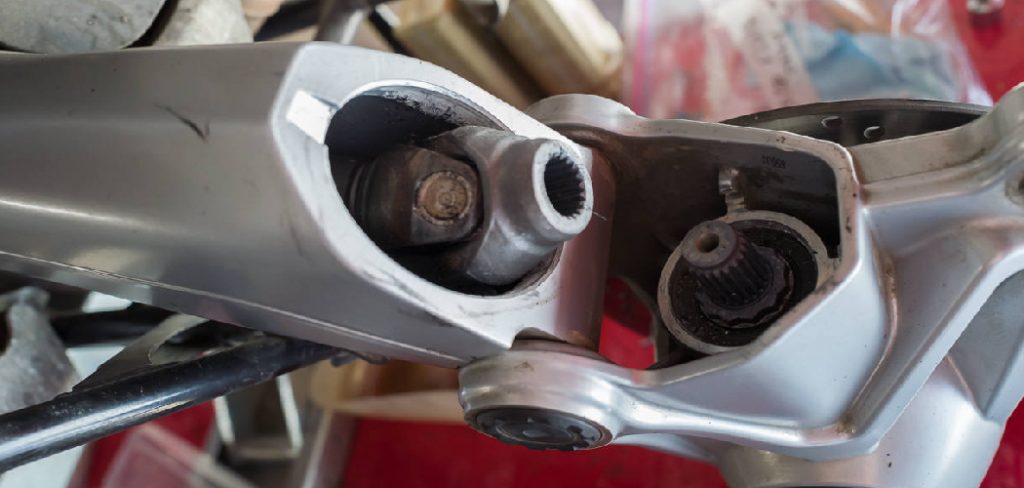
In this article, we delve into how to fix drive shaft angle, exploring the causes behind misalignment and the consequential effects on vehicle dynamics. By understanding the critical role of drive shaft angles, enthusiasts and mechanics alike can embark on a journey to diagnose, adjust, and rectify these angles, ensuring a smoother and more efficient transfer of power within the vehicle’s drivetrain.
From comprehensive inspections to precision adjustments, this guide provides insights into the methods employed to correct drive shaft angles, fostering a balanced and optimized driving experience.
Potential Issues from Improper Drive Shaft Angles
Improper drive shaft angles can lead to a variety of mechanical and performance issues that can impair a vehicle’s operation. Vibrations are one of the most common symptoms, manifesting as a shudder felt through the vehicle’s body, especially at certain speeds or when accelerating.
These vibrations can place excessive stress on the bearings and universal joints, resulting in premature wear or even catastrophic failure. Additionally, incorrect drive shaft angles can cause excessive tire wear, due to the uneven distribution of power to the wheels. The resultant strain on the drivetrain can also lower fuel efficiency, as the engine is forced to work harder to compensate for the power loss.
If left unchecked, these issues can snowball into more severe complications, requiring extensive and costly repairs. It is thus imperative to recognize and address any deviations in drive shaft angles to maintain the vehicle’s integrity and performance.
Understanding Drive Shaft Angle
The drive shaft angle, which pertains to the angular relationship between the transmission, drive shaft, and differential, is paramount for the smooth operation of the vehicle’s drivetrain. Ideally, these components should be in alignment to ensure that the rotational force is transmitted efficiently without any undue stress on the joints and bearings.
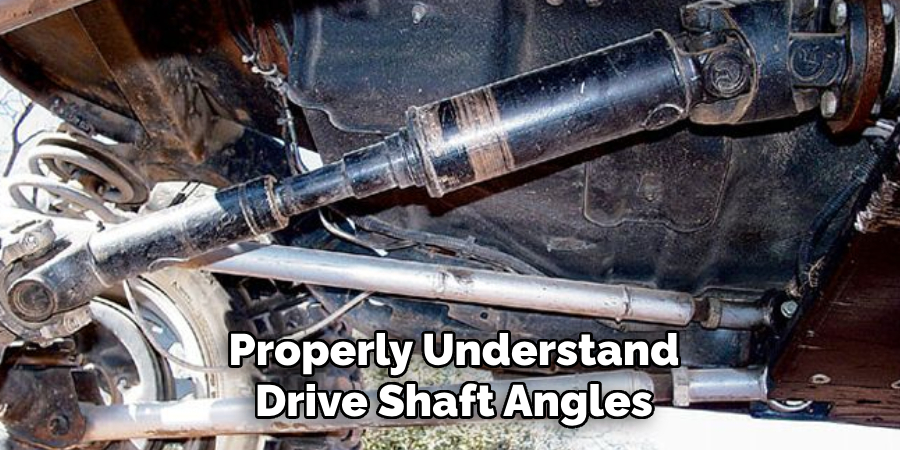
An incorrect angle can lead to increased resistance and friction, disrupting the harmonious flow of power. To properly understand drive shaft angles, one must consider concepts such as ‘working angle’ and ‘angularity’. The working angle is the difference between the angles of the transmission output shaft and the drive shaft, and similarly, the angle between the drive shaft and the differential input shaft.
These angles should ideally be equal but opposite in sign to cancel out any joint speed variations. Understanding these geometric relationships is the first step towards identifying and correcting misalignment to avoid any negative impact on the vehicle’s performance.
Definition and Components of the Drive Shaft Angle
The drive shaft angle refers to the specific angles formed between the drive shaft and the other components it connects — primarily the transmission and the differential. The key elements involved in defining the drive shaft angle include the transmission output shaft, the drive shaft itself, and the differential input shaft.
The objective is to maintain a proper drive shaft geometry that allows for an equal and opposite angular relationship, which minimizes vibrations and ensures a smooth rotation of the drive shaft throughout its cycle. Proper alignment of these components reduces wear on the universal joints and bearings, preventing the potential for mechanical failures and maintaining the efficiency of the vehicle’s power transfer system.
Relationship Between Transmission, Transfer Case, Differential, and Drive Shaft
The transmission, transfer case, differential, and drive shaft are key components of a vehicle’s drivetrain system, each serving a unique yet integral role. The transmission starts the process by adjusting the engine’s torque and speed and delivering it to the drive shaft.

In four-wheel or all-wheel drive vehicles, the transfer case is an additional mechanism that receives this power and then distributes it proportionately between the front and rear axles via separate drive shafts. From there, the differential further divides the torque between the individual wheels, allowing them to rotate at different speeds, which is particularly crucial during cornering.
The drive shaft facilitates this critical power flow from the transmission to the differential. Maintaining appropriate drive shaft angles relative to the transmission and differential is crucial to ensure that torque is delivered smoothly and efficiently without excessive wear on the drivetrain components.
Symptoms of Drive Shaft Angle Problems
Identifying symptoms of drive shaft angle problems is key to preventing prolonged damage to a vehicle’s drivetrain. The most prominent indicator is vibration that intensifies with vehicle speed – a clear sign that drive shaft components may be working at improper angles.
Drivers might also notice an unusual noise, such as a clunking or rattling, particularly when accelerating or shifting between drive and reverse. Further signs include irregular tire wear, which suggests that the drive shaft might be delivering power unevenly to the wheels. Poor fuel efficiency can also hint at drive shaft angle issues, as the engine compensates for the extra energy required to overcome the added strain on the drivetrain.
Lastly, an unexpected difficulty in handling, especially at higher speeds, may arise due to the unpredictable power distribution caused by a misaligned drive shaft. Prompt attention to these symptoms can avert the need for more significant repairs down the line.
Common Signs of Drive Shaft Angle Issues
In the realm of vehicular maintenance, recognizing the common signs of drive shaft angle issues is critical for timely diagnosis and intervention. These signs include:

- Persistent Vibrations: One of the earliest indicators is a continuous vibration or shuddering sensation, especially under acceleration, signaling misalignment within the drivetrain components.
- Abnormal Noises: Listen for peculiar sounds such as clanking, squeaking, or grinding that originate beneath the vehicle, typically symptomatic of stressed or worn-out bearings and joints.
- Uneven Tire Wear: Unequal wear patterns on the tires can often point to drive shaft troubles, where power is not being effectively transferred, leading to tire stress and degradation.
- Reduced Fuel Economy: If you notice a drop in miles per gallon without a clear reason, an inefficient drive shaft could be contributing to the engine’s increased workload and subsequent fuel consumption.
- Difficulty in Handling: A misaligned drive shaft can impact the vehicle’s handling, making the driving experience feel unstable or erratic at high speeds or when changing direction.
10 Methods How to Fix Drive Shaft Angle
1. Conduct a Visual Inspection:
Start by visually inspecting the drive shaft for any visible signs of misalignment or damage. Look for unusual wear patterns on U-joints, indicating potential angle issues. Examine the angle of the drive shaft concerning the transmission, transfer case, and differential to identify any noticeable deviations.
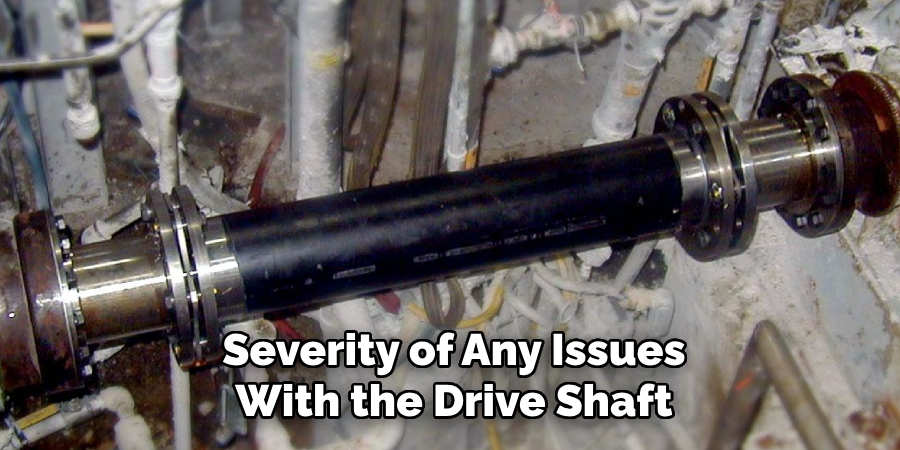
After conducting a visual inspection, it is essential to take measurements to determine the exact amount of misalignment or damage. This can be done using specialized tools such as dial indicators and laser alignment devices. These measurements will help in identifying the precise location and severity of any issues with the drive shaft.
2. Measure the Operating Angles:
Utilize an angle finder or a digital inclinometer to measure the operating angles of the drive shaft. Assess the angles at the transmission output, the midpoint, and the differential input. Compare these measurements with the manufacturer’s specifications to identify any discrepancies that may need adjustment.
Once you have measured the operating angles, it is important to understand what they mean and how they can impact your vehicle’s performance. The transmission output angle refers to the angle at which the drive shaft connects to the transmission. This angle should typically be within a certain range, as specified by the manufacturer, for optimal performance.
The midpoint angle refers to the angle at the center point of the drive shaft. This angle should also be within a specific range for proper operation. If this angle is too high or too low, it can cause vibration and excessive wear on the drive shaft components.
3. Check for Axle and Suspension Changes:
Modifications to a vehicle’s axle or suspension system can alter the drive shaft angle. Verify whether recent changes, such as lift kits or suspension adjustments, have affected the angles.
Adjust the angles accordingly to accommodate these modifications and restore the proper relationship between drivetrain components. While doing so, it is important to ensure that the vehicle’s ground clearance and overall stability are not compromised.
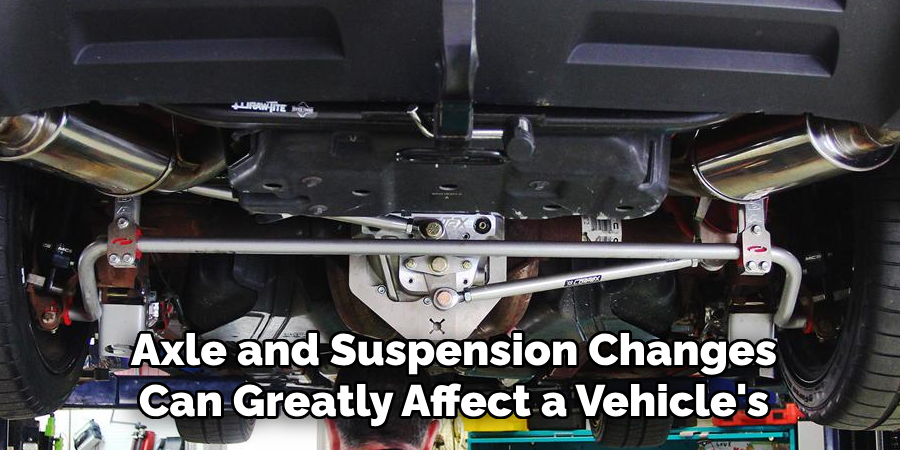
Additional content: Axle and suspension changes can greatly affect a vehicle’s performance and handling. Lift kits and suspension adjustments done for aesthetic purposes or to improve off-road capabilities can cause significant changes in the drive shaft angle. This change can lead to vibrations, steering issues, or even damage to the vehicle’s drivetrain components if not addressed properly.
4. Verify Pinion and Transmission Angles:
Assess the relationship between the pinion angle of the differential and the transmission angle. These angles should be parallel to avoid introducing unnecessary stress on U-joints and other drivetrain components. Adjust the angles as needed to achieve proper alignment, promoting smooth power transfer.
Pinion and transmission angles are crucial factors to consider in maintaining a healthy drivetrain. A misaligned differential can cause vibrations, whining noise, and premature wear on the driveshaft and other components. In contrast, proper alignment ensures that power is transferred efficiently from the engine to the wheels.
To verify the pinion and transmission angles, you will need a protractor or an angle finder tool. Place the tool on the driveshaft and measure the angles of both the pinion and transmission yokes. If they are not parallel, adjustments will be necessary.
5. Utilize Shims or Wedges:
Shims or wedges can be used to fine-tune the drive shaft angles. Placing shims between the axle and leaf spring or between the transmission and crossmember can help achieve the desired angles. Experiment with different shim thicknesses to find the optimal configuration that minimizes vibrations and ensures proper alignment.
You might also want to consider using wedges for more precise adjustments. Wedges are typically installed between the axle and a leaf spring or between the transmission and crossmember, just like shims. However, they offer a greater degree of flexibility as they can be trimmed down to size for a perfect fit.

Additionally, shims or wedges can also help correct any misalignment caused by a lift kit or aftermarket suspension upgrades. They can compensate for any changes in the drivetrain angles and ensure smooth operation of the vehicle.
6. Consider Adjustable Control Arms:
For vehicles with independent suspension systems, adjustable control arms offer a means of modifying the drive shaft angles. These arms allow precise adjustments to the pinion angle, ensuring proper alignment with the transmission. Install adjustable control arms to fine-tune the angles and enhance drivetrain performance.
With adjustable control arms, drivers have the ability to fine-tune their vehicle’s suspension system for optimal performance. By making precise adjustments to drive shaft angles and pinion angle alignment, drivers can improve overall drivetrain performance. This is especially beneficial for off-road vehicles or those used for racing, where small changes in suspension settings can make a big difference.
7. Install a Pinion Angle Corrector:
In cases where the drive shaft angle is affected by changes in ride height, a pinion angle corrector can be employed. This device helps maintain the correct relationship between the pinion and the transmission, compensating for alterations introduced by modifications like lift kits or changes in suspension geometry. This is particularly important for vehicles with high torque outputs.
Pinion angle correctors come in various forms, including offset shims and adjustable arms. The most common type is the shim, which consists of a series of angled metal pieces that are placed between the differential housing and axle perches. These shims tilt the axle up or down, effectively changing the pinion angle. This method is simple and cost-effective, making it a popular choice among off-roaders.
8. Perform Test Drives:
After making adjustments to the drive shaft angles, perform test drives to assess the impact on drivability. Monitor for vibrations, unusual noises, or changes in handling. If issues persist, further adjustments may be necessary to fine-tune the angles and achieve optimal drivetrain performance. Additionally, it is recommended to check the alignment of other drivetrain components such as the differential and the transmission.
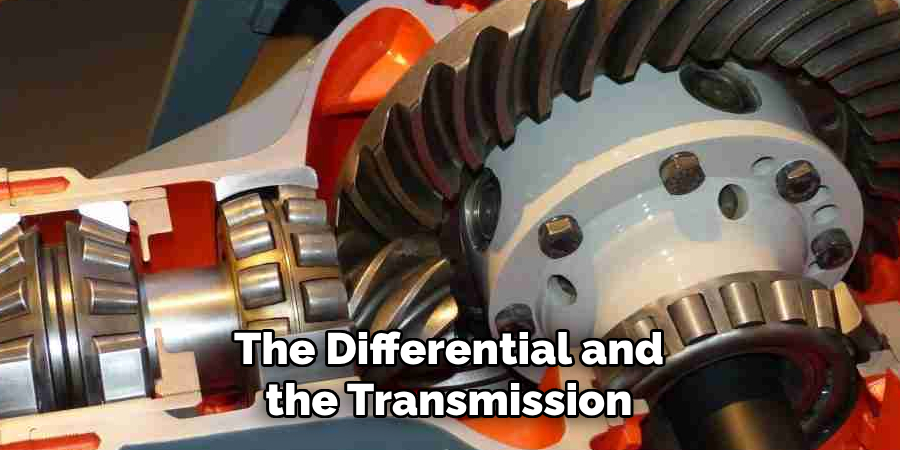
When performing test drives, it is important to follow safe driving practices and ensure that all traffic laws and regulations are followed. Test drives should be conducted in a controlled environment, away from heavy pedestrian and vehicle traffic. It is also important to be aware of any potential hazards on the roads, such as potholes or uneven surfaces.
While on the test drive, pay close attention to any changes in how the vehicle handles, especially during acceleration and deceleration. If any issues are noticed, it is important to address them promptly before they become larger problems in the future.
9. Seek Professional Alignment Services:
For complex or challenging drive shaft angle issues, consider seeking professional alignment services. Specialized alignment shops have the expertise and equipment to diagnose and rectify misalignments accurately. Professional alignment services may involve laser alignment tools and other advanced technologies to achieve precise adjustments.
Additionally, they may also be able to recommend solutions for other underlying issues that may cause drive shaft angle problems. Seeking professional alignment services can save time and money in the long run by preventing costly repairs and replacements.
In addition to seeking professional alignment services, it is important to regularly inspect your drive shaft for any signs of wear or damage. This can help detect potential problems early on and prevent them from escalating into more serious issues. Furthermore, following proper maintenance practices can also prolong the lifespan of your drive shaft and ensure optimal performance.
10. Reevaluate and Fine-Tune:
Drive shaft angles can be influenced by various factors, and adjustments may need periodic reevaluation. Regularly recheck the angles, especially after making modifications to the vehicle or its suspension system. Fine-tune the angles as needed to maintain optimal drivetrain performance and prevent long-term damage.
Additionally, it is crucial to inspect the drive shaft for any signs of wear and tear. Look for cracks, dents, or other damages that may affect its performance. If any issues are detected, have them addressed immediately by a professional mechanic.
Another important aspect to consider is lubrication. A well-lubricated drive shaft ensures smooth movement and reduces friction between its components. Check the manufacturer’s recommendations for lubrication intervals and use high-quality lubricants to ensure maximum efficiency.
Conclusion
In conclusion, addressing drive shaft angle issues is essential for maintaining optimal vehicle performance and drivability. By understanding the symptoms and conducting thorough diagnostic procedures, individuals can identify and correct angle discrepancies effectively. Whether adjusting the pinion angle, using shims or wedges, or exploring other corrective measures, ensuring proper alignment of drive shaft components is paramount.
Preventive maintenance and regular inspections play a vital role in detecting and addressing angle problems early on, mitigating the risk of drivetrain issues and ensuring smooth operation. Hopefully, this article gave you some helpful tips about how to fix drive shaft angle successfully, so now that you have the proper knowledge on how to get the job done, why not give it a try today?

